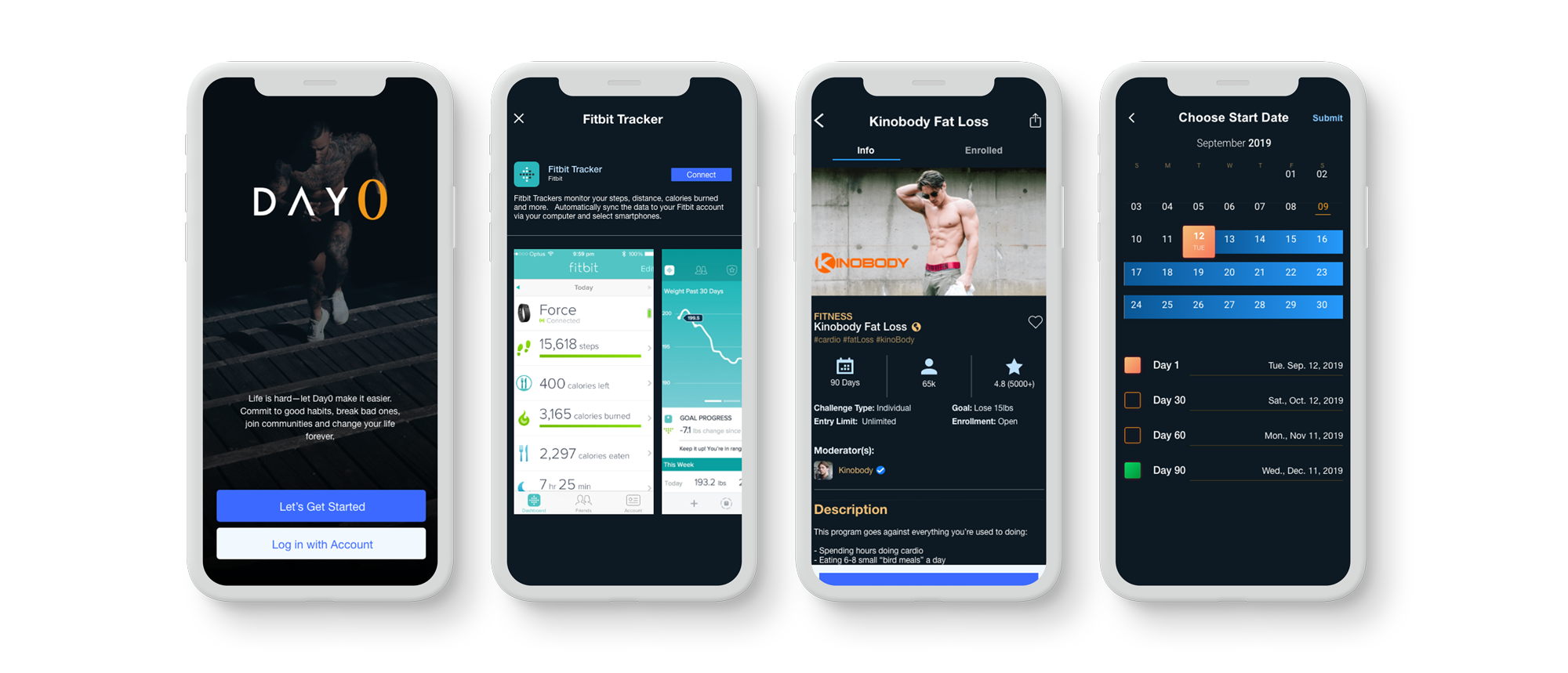
Day 0 is a mobile application concept that uses competition and the tribal bond of a community to create positive, sustainable habits.
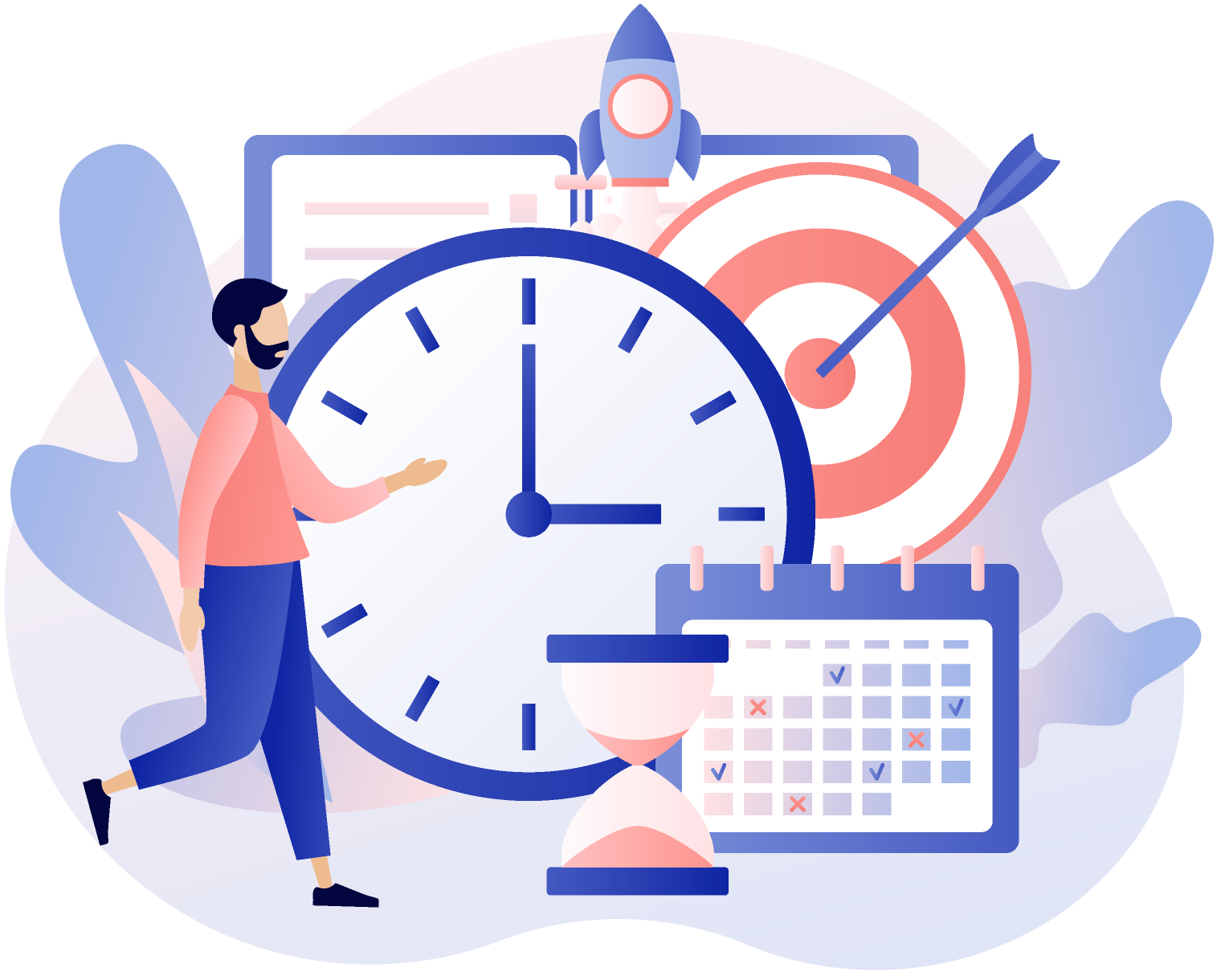
As a student at UCI's UX/UI design program, I was prompted to design a mobile application that would improve an existing global problem of my choice. I, along with two other classmates, Hannah Park and Raheleh Khatami, chose to tackle an issue that at first glance, may not seem as crucial of a topic as, say, global-warming or cancer, but still remains an important concern in the ever-growing technological world that we live in. That topic was habit-creation.
You might find yourself still wondering, "How is habit-creation an important global issue? Well, while the demands of technology have increased over the past several decades, especially with the introduction of social media and the palm-sized laptop we carry in our pocket everywhere we go, our brain's capacity to handle its ubiquitous, overpowering demand for control of our attention has not. We therefore set out to see how might we help users take back control of their habits and commit to long-term positive changes.
HOW LONG DID IT TAKE?
2 1/2 weeks
WHAT WAS MY ROLE?
1 of 3 UX Designers
Researched and designed end-to-end experience
WHAT SOFTWARE DID I USE?
Miro
Figma
Adobe Suite (Photoshop, XD)
InVision
People find it difficult to change their habits due to the following reasons:
Every habit is neurologically structured with the following three elements:
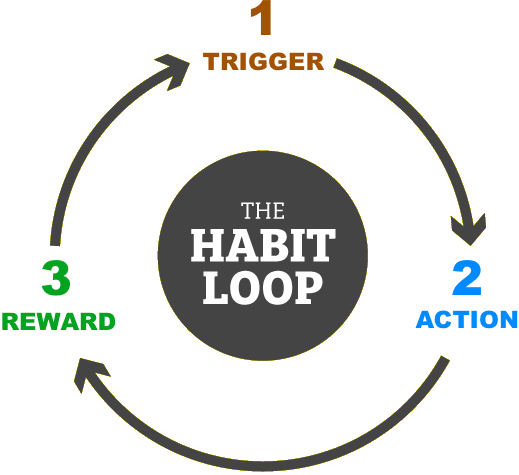

Your life is a sum of all your habits - good or bad.

It takes on average of 66 days before a new habit take root in our brain.

Habits are just overpowered by other habits.
We continued our research by surveying and interviewing our users directly to question their behavior.
Here are some of the most interesting insights we discovered:

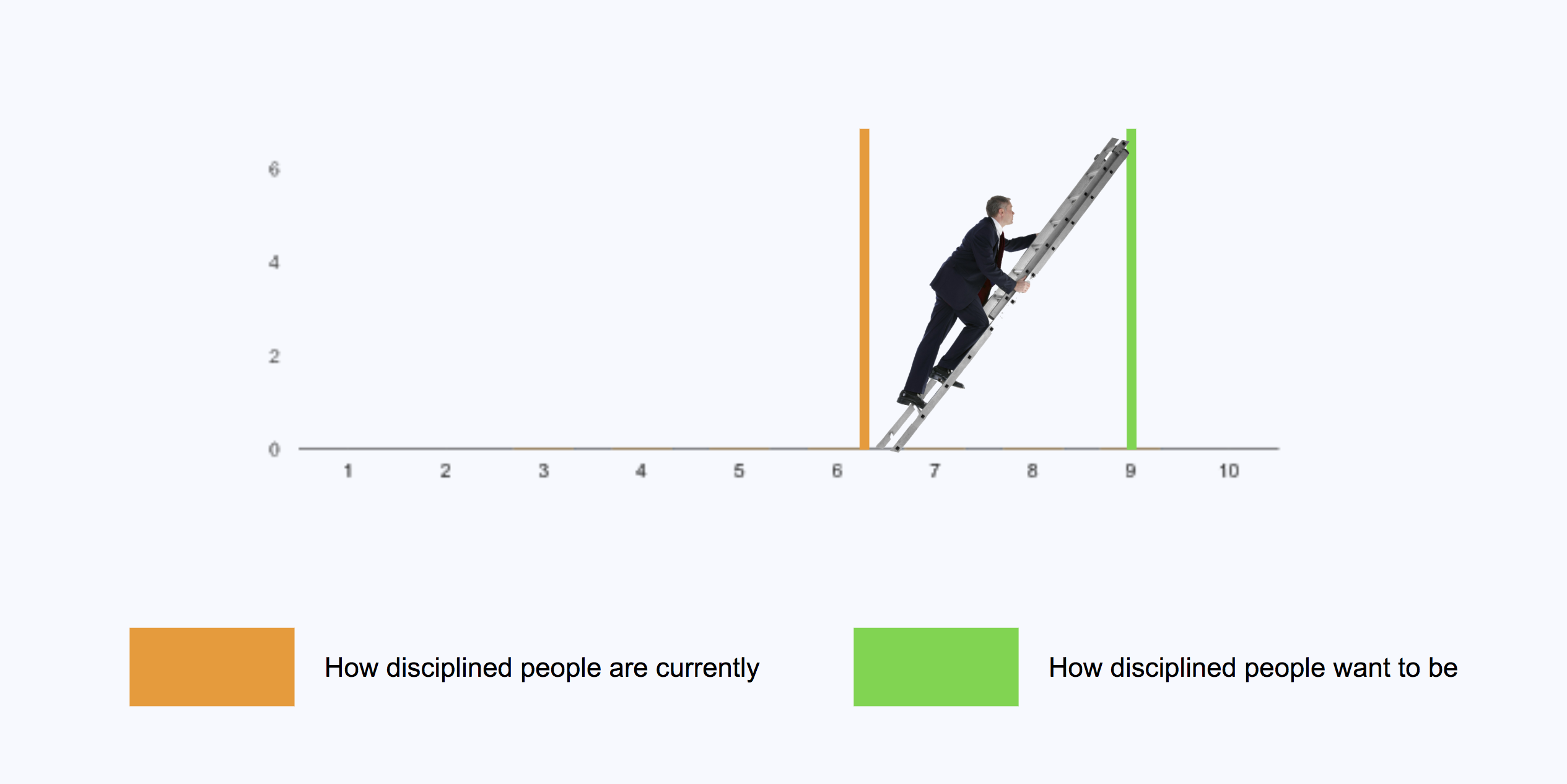
Below are a several fruitful quotables we obtained from our interviews:
[When asked why they haven't quit sugar] "Because it's too overwhelming. Sugar is in everything. I wouldn't know where to start"

"[I] will tolerate the bad side-effects of things and [I'm] not really willing to change until [I] hit rock bottom."

"Daily routines really help, when in a very consistent routine able to achieve the daily habits she would like to implement into life"

"Replacing one habit with another was the easiest way to stop the previous habit"

"Having someone to keep [me] accountable really helps in creating habits/change. Also having a deadline to work towards incentive would help."

"The one thing that helped was easing into my diet. Going cold turkey was not sustainable or realistic."


“I’ve hit rock bottom and want to change my life around. I just don’t know how”

"I'm a fitness instructor taking bringing my programs to social media. It's taking off, but it's hard to keep up with my followers”

"As the HR director, I need to figure out a way to incentivize employees to be healthy”
Damon Gala

AGE
JOB TITLE
STATUS
LOCATION
29
Business Analyst
Single
Austin, TX
About Damon
Damon has become too comfortable with his life over the past several years. Being financially stable, Damon spends his extra time playing video games, watching tv, & drinking and smoking with his friends. Unfortunately, Sarah, his girlfriend of 7 years, just left him over his vices. Damon is officially in a full-fledge mid-life crisis.
Pain Points
Holly Gates

AGE
JOB TITLE
STATUS
LOCATION
27
Entrepreneur
Single
Beverly Hills, CA
About Holly
Holly is a successfully social media influencer and health coach that markets her healthy lifestyle and fitness programs. She sells them on her Instagram and personal website, and encourages her students to record their transformational journeys as social proof. Holly is starting to gain some big traction and is scaling up quickly.
Pain Points
Monica Reed

AGE
JOB TITLE
STATUS
LOCATION
41
HR Manager
Married
El Segundo, CA
About Monica
Monica is an HR manager at Mattel. Her career is very important to her and she believes that her efforts define who she is. This pushes her to be the best at what she does. Monica tries her best to be up-to-date on new and upcoming technologies & applications. She often finds herself not being able to balance her home and work life.
Pain Points
Now that you have been introduced to Damon, let's get a better look at his life and how Day 0 had the ability to positively affect it
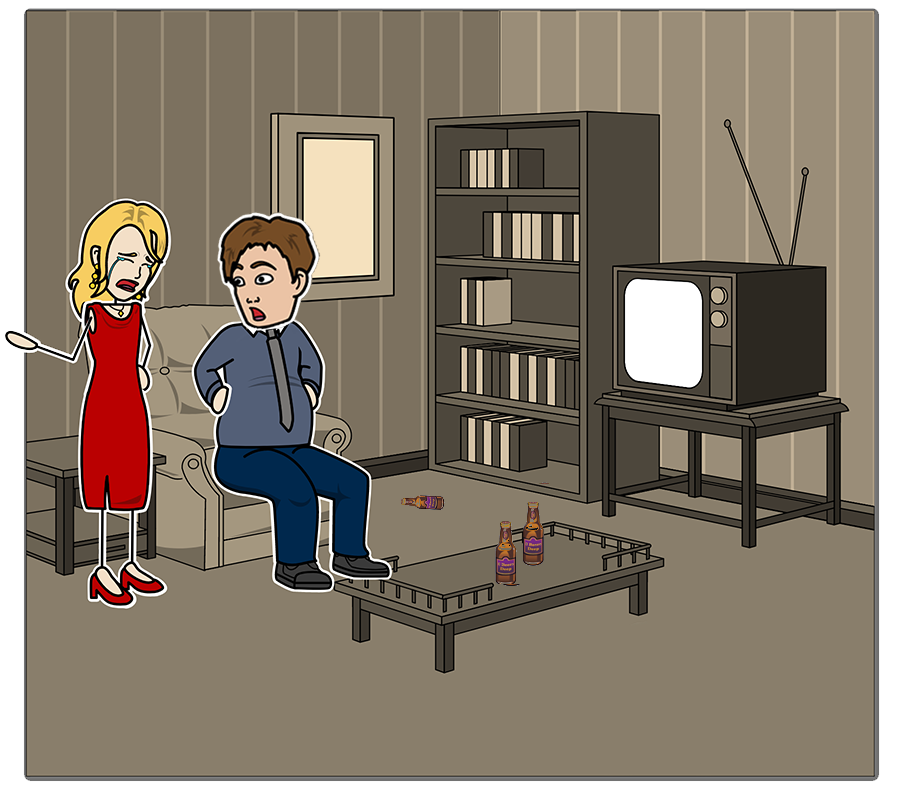
SARAH DUMPS DAMONDamon is home after a long day’s work, drinking and watching TV as he always does, when his girlfriend Sarah tells him she’s leaving him. She’s fed up of his vices.
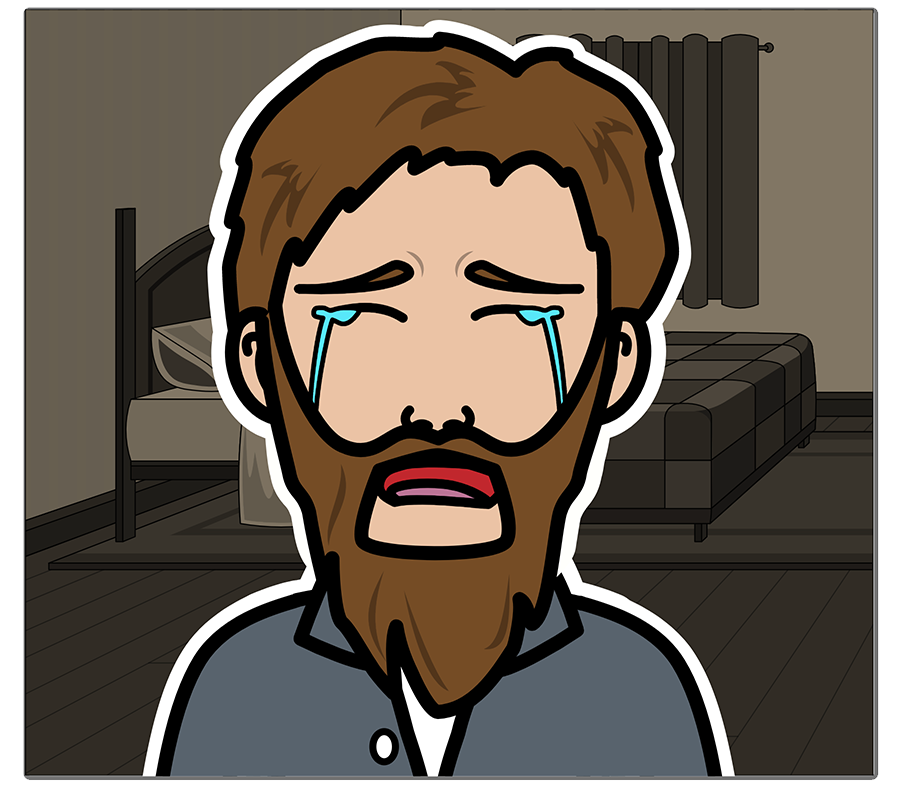
DAMON HITS ROCK BOTTOMDamon is devestated. Over the span of 3 months, he spirals into a depressive state, putting on a lot of weight. He has offically hit rock bottom.
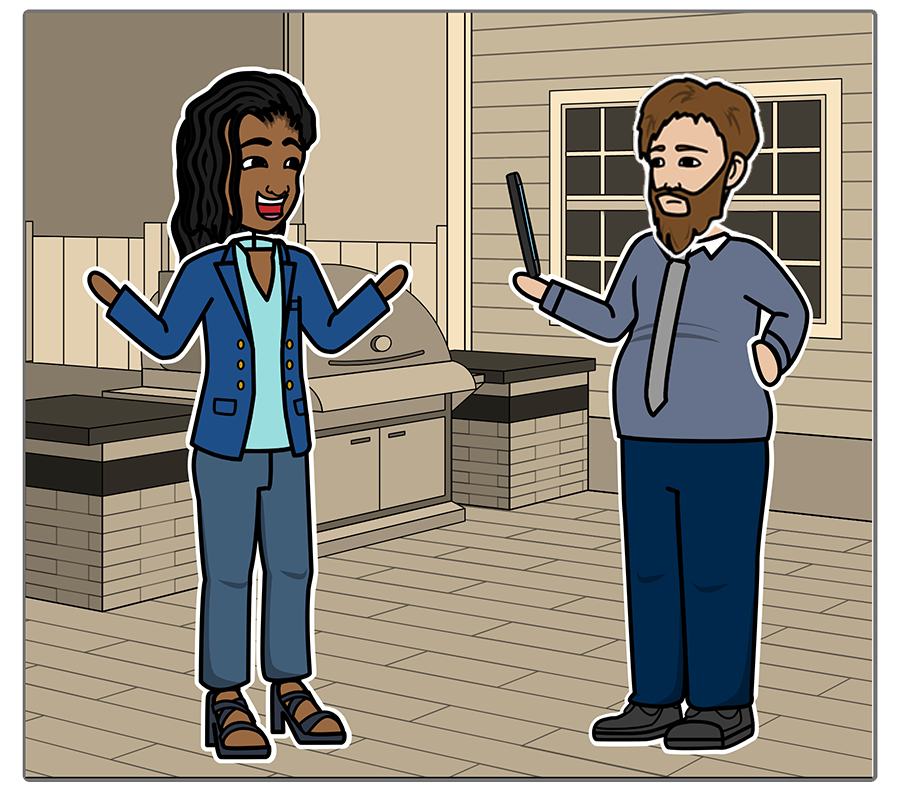
DAMON'S FRIEND SUGGESTS DAY 0His friend Simeon notices Damon’s negative transformation one day at a party and advises him to user this new app called Day 0. It worked for her.
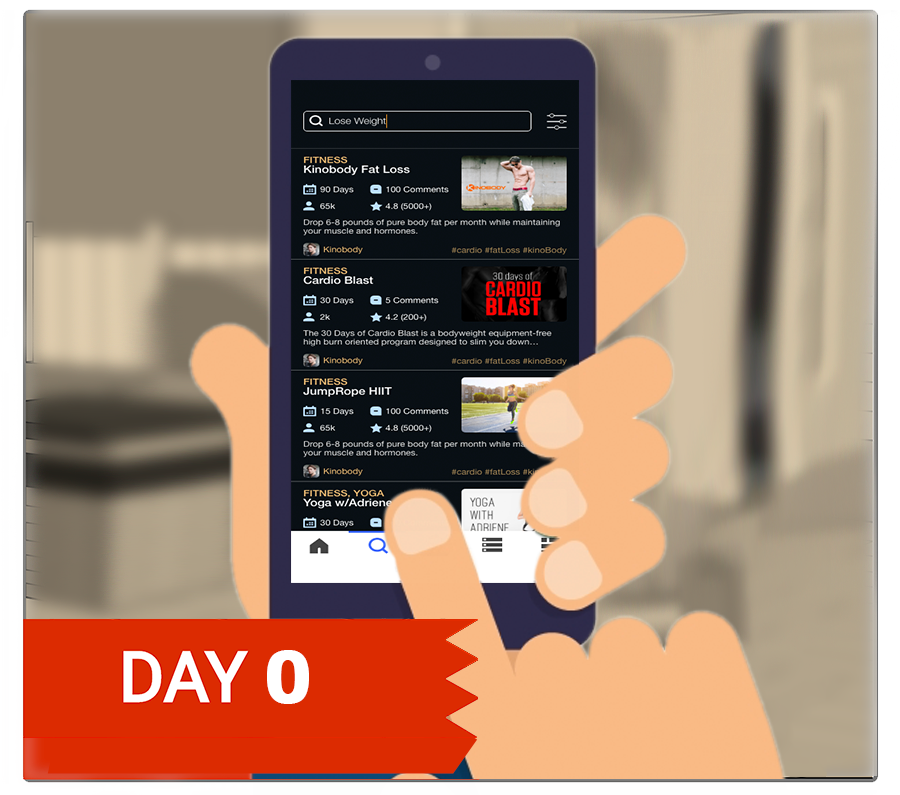
DAMON JOINS HIS FIRST CHALLENGEWith nothing to lose, Damon downloads the app and immediately signs up for a challenge to lost weight. He sees the transformations and is impressed by the reviews and engagement.
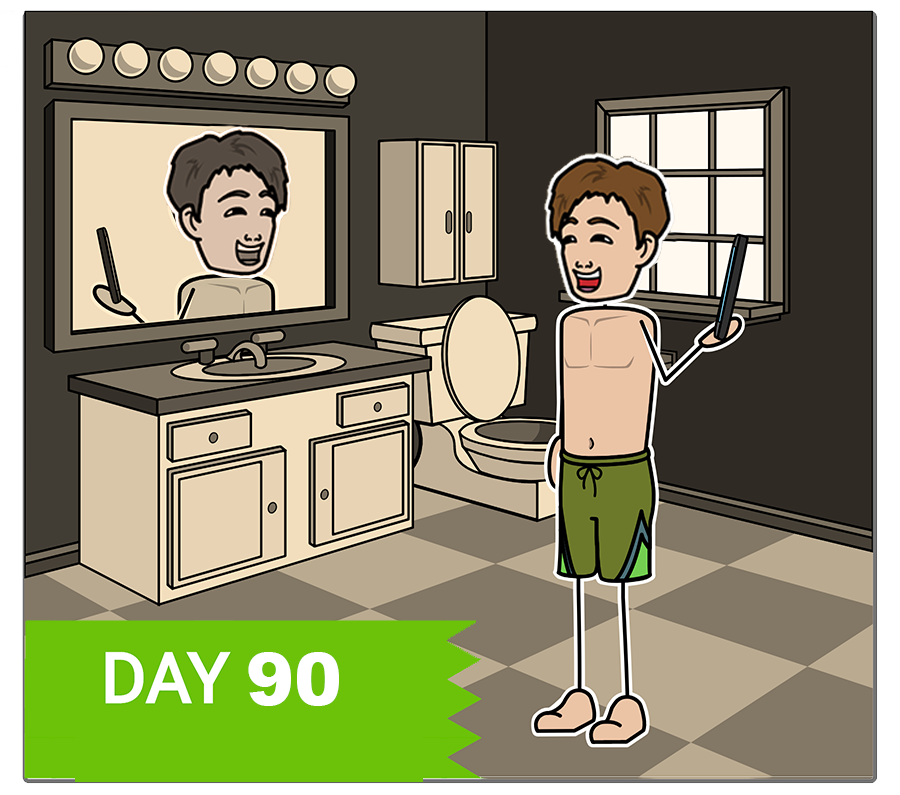
DAMON COMPLETES CHALLENGE90 Days after a strictly guided challenge to lose weight and a supportive community to keep him on track, Damon is a new man. He has lost a lot of weight and is ecstastic about his 90 day look.
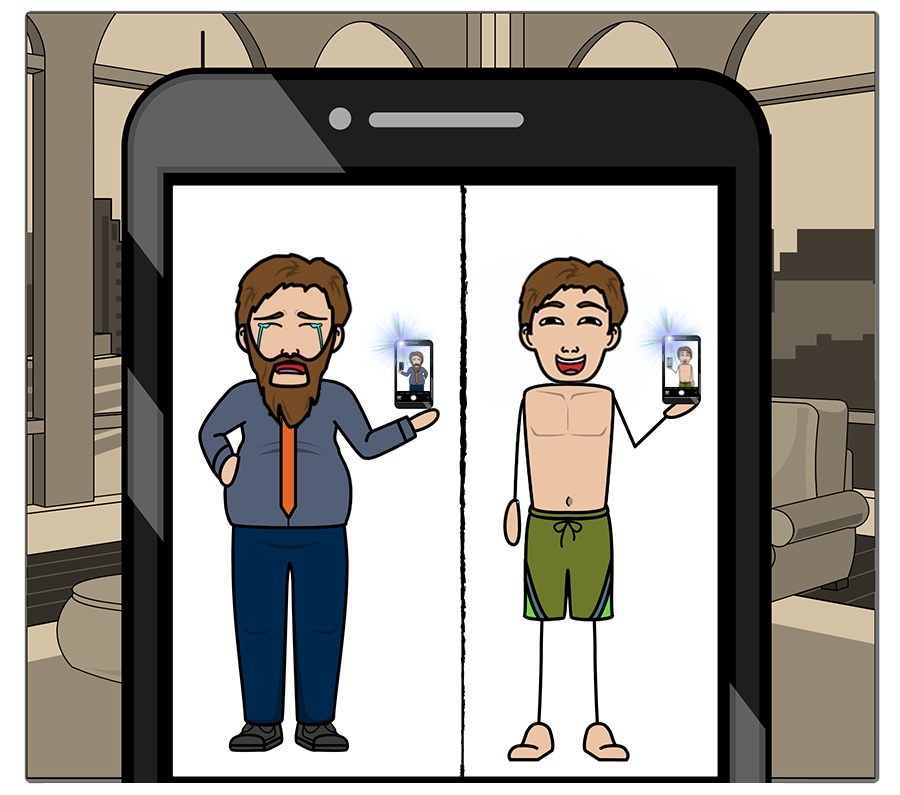
DAMON SHARES HIS TRANSFORMATIONUsing the app’s side-by-side comparison overlay feature, Damon posts his ‘Before and After’ picture to Instagram. His friends can’t believe it. One by one his friends join hoping to change their own lives as well.
The first phase of user testing began once we had a clickable wireframe prototype. We tested a combination of our two user flows with our users, asking them to sign up via Facebook and select a challenge to enroll in.
Through the testing, we quickly discovered three things:
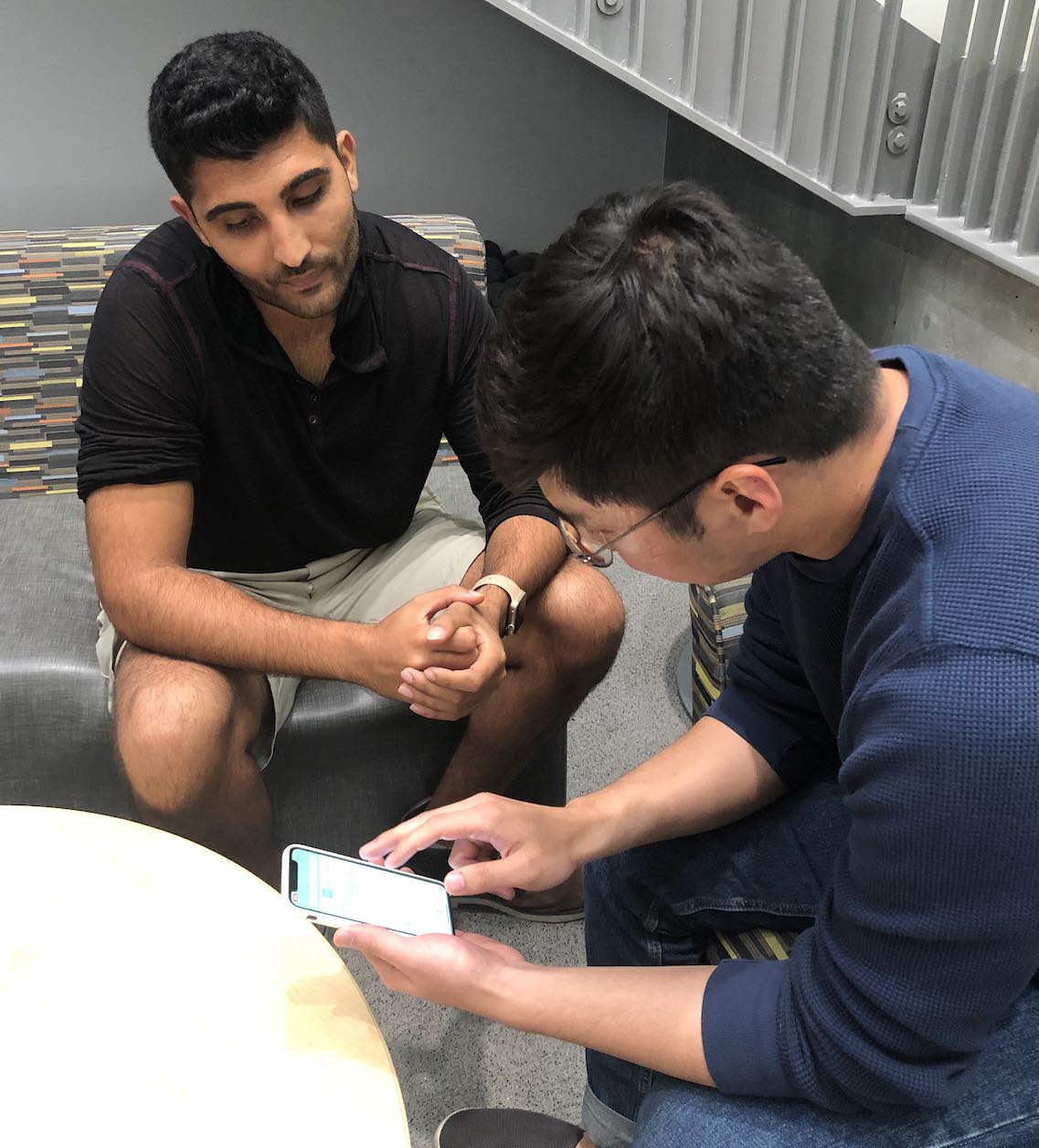


The zero in "Day 0" looks like an "O" — Since our testing was done on a monochromatic prototype, the logo too was monochromatic, therefore making it difficult to differentiate the integer "0" [zero] from the letter "O" [oh].

Emphasize the zero using color — To fix the confusion, we had two options: either to add a diagonal line through the zero to better emphasize the integer, or to user color to differentiate it from the rest of the text. We chose the latter.
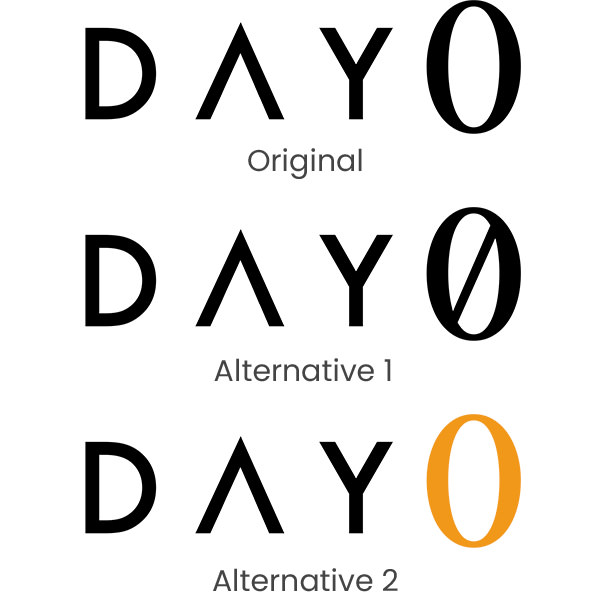


Too much info on the challenge page — Users found the challenge page too cluttered with text. It felt overwhelming with too much information.

Add toggles — Once again, the monochromatic prototype helped us understand where our elements lacked visual hierarchy and breathability. Our solution was to hide most of this area with toggles, neatly exposing the information only if the user desires to do so.
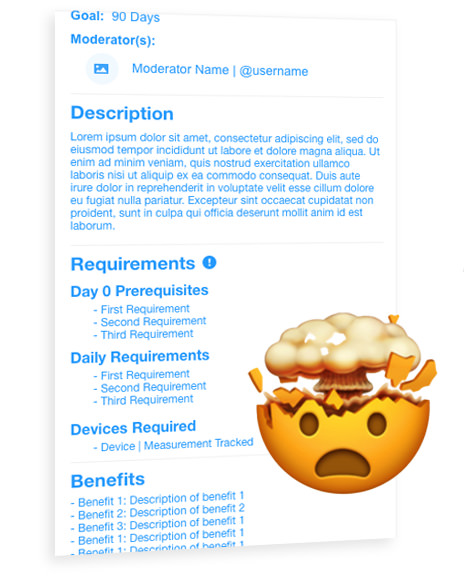


The word contract is too intimidating — When joining their first challenge, users immediately became intimidated by the term contract. They felt as if they were "signing their life away" and didn't want to "commit to something they didn't know if they could complete".

Change the name to setup page — We want the user flow of joining a challenge to be inviting, yet informative. The last thing we want to do is scare our users before they even join. We removed the term "contract" and substituted it with "setup", a much friendlier word that the user is accustomed to seeing.
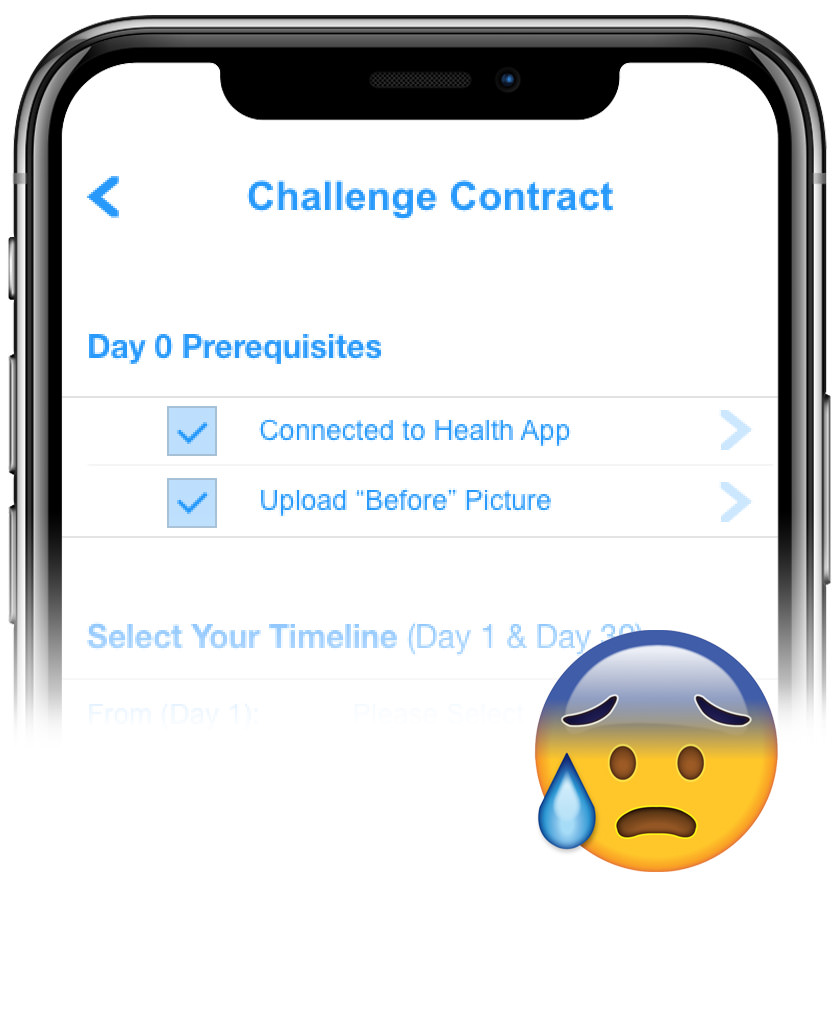
You just opened the app! Great. Now let's get signed up and started.
Damon Gala (recognize him from our user persona?) is using his Facebook to sign up. As you can see, the fields automatically populate, making signing up a quicker, easier process.
The user is now ready to join their first challenge.
Clicking on the challenge tab at the bottom menu will bring you to a page with all the various categories to search from, including featured challenges and routines (a group of mini-challenges.)
Each challenge will have its own dedicated page where the user can view its details.
This includes: how long the challenge is, who moderates the page, ratings and reviews, the pre-requisites needed to begin the challenge, what data will be documented, the benefits of completing the challenge, relevant articles, etc.
The user is now ready to join their first challenge.
Clicking on the challenge tab at the bottom menu will bring you to a page with all the various categories to search from, including featured challenges and routines (a group of mini-challenges.)
Here is where the accountability is introduced, as the user can publicly interact with other participants in the challenge.
Here people can view stories, post pictures, and immerse in spreading their positive encouragement with a like-minded community.
When we first set to create a productivity app, we were immediately overwhelmed by the saturation of the market. After all, so many habit-creating apps already flooded the app store.
But something interesting happened once we conducted our user research. We quickly learned that a crucial aspect was missing in these apps, one that was especially important to self-improvement: the accountability and support of other users.
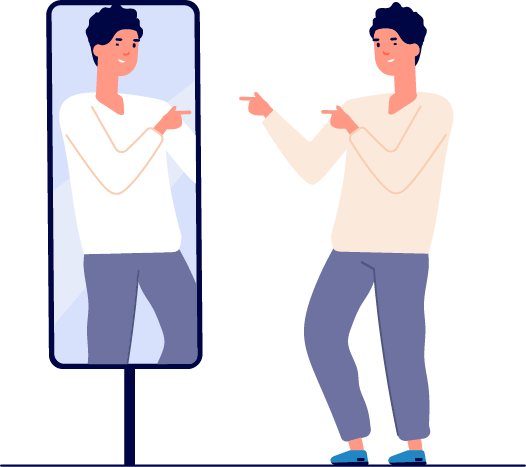
Couples find themselves mirroring their habitual practices with one another, a messy roommate will often conform to his or her tidy roommate, and a family member who starts going to gym has known to have a contagious effect on other members of the household. Ultimately, it became obvious to us that both negative and positive habits are highly dependent on a support system and the accountability it creates in determining the success of a long-lasting habit.
This is one of the many gems that we obtained that we wouldn't have been able to without a user-centric approach. Proving once again that while the problems that exist in the world may be endless, if we just begin to investigate the people facing them more often, what we discover will better guide us towards more workable solutions.
UX Case Study
UI Practice
Medium Article